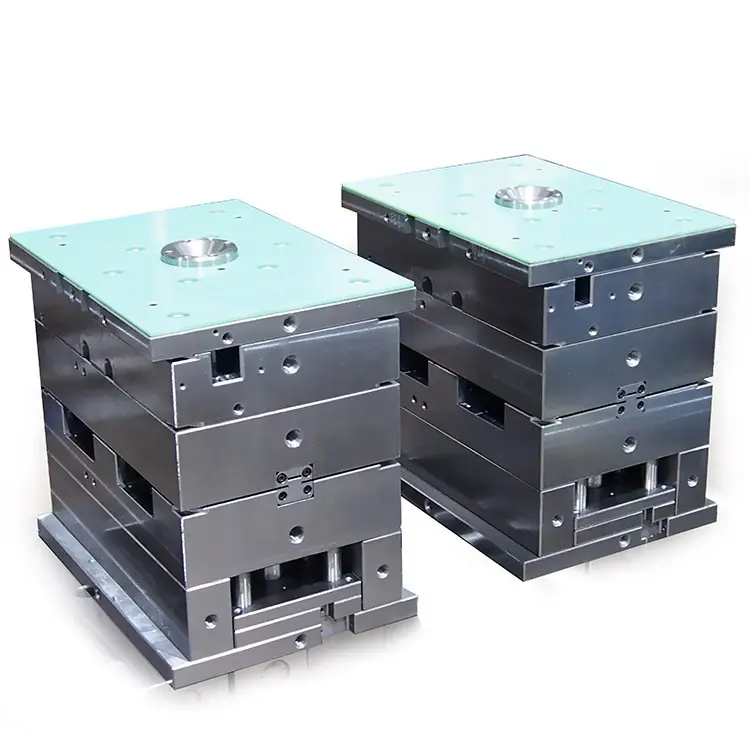Introduction to Mold Components
Mold components play a critical role in the manufacturing process, particularly in the fields of injection molding, blow molding, and compression molding. Understanding these components is essential for manufacturers in Russia seeking to optimize their production processes and improve the quality of their products.
Key Mold Components
The primary components of a mold include:
- Mold Base: This is the foundation of the mold, providing support and stability. It typically consists of two parts: the front and back plates.
- Cavities and Cores: These components create the part's shape. Cavities form the outer surface while cores shape the internal features.
- Guide Pins and Bushings: These ensure precision while closing and opening the mold, maintaining alignment between the components.
- Ejector System: This is responsible for removing the finished part from the mold. It usually consists of ejector pins or plates that push the part out.
- Cooling Channels: Proper cooling is vital to solidify the molded material uniformly and prevent defects. Cooling channels are strategically placed to optimize heat removal.
- Ventilation: Venting allows trapped air to escape during the injection process, which is crucial for achieving high-quality finishes.
Material Selection for Mold Components
The choice of materials for mold components is fundamental to their efficiency and longevity. Common materials include:
- Steel: Sturdy and durable, steel is commonly used for molds requiring high longevity and resistance to wear.
- Aluminum: A lightweight alternative that offers faster heat dissipation, it is ideal for low-volume production.
- Beryllium Copper: Known for excellent thermal conductivity, it is often used for components where heat transfer is critical.
Choosing the right material is essential based on production needs, cost constraints, and the expected lifespan of the mold.
The Manufacturing Process in Russia
In Russia, the manufacturing process incorporates a combination of traditional craftsmanship and modern technology. Following EU and international standards for molds is crucial for Russian manufacturers to enhance their competitiveness. CAD (Computer-Aided Design) and CAM (Computer-Aided Manufacturing) technologies are frequently employed to design parts and optimize the manufacturing process.
Challenges in Mold Manufacturing in Russia
Despite advancements, the mold manufacturing industry in Russia faces several challenges:
- Supply Chain Issues: The availability of high-quality materials and components can vary, impacting production timelines.
- Technology Gaps: Some manufacturers may lack access to the latest technology and tools, resulting in inefficiencies.
- Skilled Labor Shortage: As the demand for molding increases, finding skilled operators who can handle advanced machinery poses a challenge.
- Regulatory Compliance: Adhering to various regulations can complicate the manufacturing process and increase overhead costs.
Optimizing Your Mold Production
To stay competitive, Russian manufacturers are encouraged to invest in:
- Research and Development: Investing in R&D allows manufacturers to innovate and improve mold designs.
- Continuous Training: Regular training for employees enhances productivity and ensures the effective usage of new technologies.
- Collaboration with International Partners: Establishing partnerships can facilitate knowledge transfer and access to advanced materials and technologies.
Conclusion
The **essential mold components** for manufacturing are pivotal for ensuring quality and efficiency in production. With growing competition in the manufacturing sector, Russian companies must prioritize material selection, address challenges, and invest in modern technologies. Such strategies will lead to enhanced productivity, better product quality, and ultimately, greater market success.
FAQs
What is the importance of mold cooling channels?
Cooling channels are critical as they regulate the temperature during the manufacturing process, ensuring that the molded product solidifies uniformly and maintains the desired shape.
How can I improve the longevity of my molds?
To enhance mold longevity, consider using **high-quality materials**, implementing a regular maintenance schedule, and applying proper cooling methods during production.
What are the common materials used in mold manufacturing?
The most common materials used for molds include steel, aluminum, and beryllium copper, each chosen based on the specific production needs and performance requirements.

